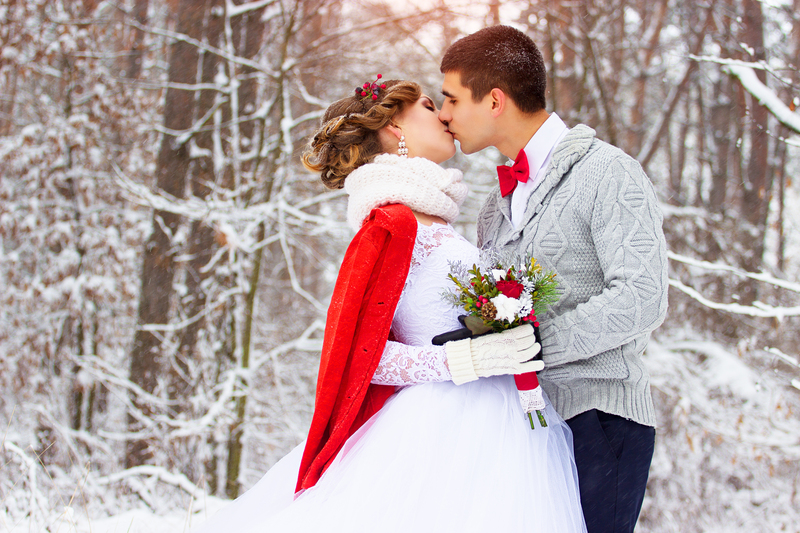Prolong the Splendor of Poinsettias at Home
Posted on 29/08/2025
Prolong the Splendor of Poinsettias at Home: The Ultimate Guide
Poinsettias (Euphorbia pulcherrima) are synonymous with the vibrant holiday season. Their vivid red, pink, white, or variegated bracts and lush green foliage bring instant festive cheer to any space. But did you know that with proper care, you can prolong the splendor of poinsettias at home--not just for weeks, but potentially for months or even years?
In this comprehensive guide, we'll reveal everything you need to know to keep your poinsettia plants looking radiant far beyond the holidays. Whether you're a beginner or a seasoned gardener, read on for essential poinsettia care tips, troubleshooting advice, and expert techniques for enjoying these dazzling plants year-round.

Understanding the Poinsettia: More Than Just a Holiday Plant
Poinsettias originate from Mexico and Central America, where they grow as perennial shrubs. These beautiful plants are often discarded after Christmas, but with proper treatment, prolonging the beauty of poinsettias is both worthwhile and rewarding.
Poinsettia Myth-Busting
- Myth: Poinsettias are highly toxic.
- Fact: While they are mildly irritating to pets and humans if ingested, the toxicity is often overstated. Nonetheless, it's wise to keep them out of reach of small children and pets.
- Myth: Poinsettias are difficult to keep alive.
- Fact: With the right care, anyone can maintain the beauty of poinsettias for months or more!
Ideal Growing Conditions to Prolong Poinsettia Brilliance
Light Requirements
Poinsettias crave bright, indirect sunlight. Place your plant near a sunny window--ideally east or west-facing. Avoid direct midday sun, which can scorch the leaves and bracts.
- Rotate the plant periodically to ensure even exposure and growth.
- If natural light is limited, supplement with LED grow lights.
Temperature and Humidity
To prolong the lifespan of your poinsettias:
- Maintain room temperatures between 60-70?F (15-21?C) during the day.
- Avoid chilly drafts, sudden temperature changes, and contact with cold windowpanes.
- Allow night temperatures to drop to around 55?F (13?C) for enhanced longevity.
- Poinsettias prefer humidity levels of 50-60%. If your home is dry, use a humidifier or pebble tray.
Watering Practices
Overwatering is the most common killer of poinsettias. Follow these tips to keep your plant healthy:
- Water only when the top inch of soil feels dry to the touch.
- Avoid letting your poinsettia sit in standing water. Empty any excess from saucers.
- Use room-temperature, chlorine-free water for best results.
- Increase humidity without waterlogging by misting the leaves occasionally.
Tip: Drooping leaves may signal underwatering or overwatering. Check soil moisture before adjusting your routine.
Fertilizing for Continued Splendor
If you want to maintain the splendor of poinsettias indoors well into spring and beyond, fertilization is key--after the blooming period:
- Begin fertilizing after the colorful bracts start to fade, usually in late winter or early spring.
- Use a balanced, water-soluble fertilizer (such as 20-20-20) every 3-4 weeks.
- Avoid fertilizing while the plant is in bloom (from December to January), as it doesn't actively grow then.
With this regimen, your poinsettia can rejuvenate and grow glossy new foliage for the coming months.
Pruning and Pinching Poinsettias for Shape and Vitality
When and How to Prune
Pruning helps to maintain poinsettia splendor at home and encourages bushier growth. Here's how:
- Wait until bracts have faded (usually late spring or early summer).
- Using clean, sharp scissors, trim stems back to 4-6 inches above the soil line.
- Discard old, faded bracts and leaves.
- Pinch back new growth every few weeks until midsummer to encourage multiple branches.
Note: Always wear gloves when handling poinsettias, as their milky sap may irritate sensitive skin.
Repotting and Rejuvenating Your Poinsettia
When to Repot
If your root ball has outgrown its container or the soil is tired, it's time to repot:
- Spring or early summer is the preferred repotting period.
- Select a pot 1-2 inches larger in diameter than the current one, with good drainage.
- Use high-quality, well-draining potting mix formulated for indoor plants.
Repotting revitalizes the roots and helps with long-term maintenance of poinsettias indoors.
Troubleshooting Common Poinsettia Problems
Dropped Leaves or Bracts
This is often due to sudden temperature shifts, drafts, or over- or underwatering. Keep conditions stable and water only as needed.
Pests: How to Spot and Manage
Poinsettias are susceptible to:
- Whiteflies -- Tiny white insects on the undersides of leaves. Remove with insecticidal soap or rinse with water.
- Spider Mites -- Look for fine webbing and stippled leaves. Increase humidity and use a miticide if necessary.
- Aphids -- These soft-bodied insects cluster on new growth. Wipe with a soapy cloth or use neem oil spray.
Yellowing Leaves
This typically indicates overwatering, root rot, or insufficient light. Adjust watering practices and light exposure as outlined above.
Reblooming Poinsettias: A Year-Round Challenge
For the dedicated plant lover, encouraging your poinsettia to color again next year is a rewarding process. Here's an approximate timeline for best results:
- Spring (March - June): As outlined in pruning, cut back all stems, repot, and let the plant grow in bright light. Move outdoors if temperatures remain above 50?F (10?C).
- Summer (June - September): Fertilize regularly and pinch back new growth until mid-August, then stop to allow flowering stems to develop.
- Fall (October): This is the most crucial phase. Poinsettias require at least 14 hours of complete darkness each night--without interruptions--for about 8-10 weeks to set colorful bracts. Place in a dark closet or cover with a lightproof box from 5 p.m. to 8 a.m., exposing to bright, indirect light during the day.
- Winter (December): Enjoy the spectacular rebloom!
Pro tip: Maintain a strict dark/light routine for best coloring in time for the holidays.
Displaying and Decorating with Poinsettias for Longevity
Creative Ways to Showcase Live Poinsettias
- Group various colors and sizes together in a festive arrangement.
- Combine with evergreens, pinecones, or seasonal ornaments for a stunning centerpiece.
- Use decorative cache pots or baskets (with drainage holes!) to blend with your home decor.
- Rotate plants in and out of high-traffic areas to minimize stress and maximize enjoyment.
Avoid positioning near heat vents, fireplaces, or entryways leading to cold drafts, as these extremes can shorten plant life.
Alternative Ways to Enjoy Poinsettia Splendor Year-Round
- Outdoor Planting: In USDA zones 9-11, poinsettias can be grown as perennial shrubs in the landscape. Plant after all danger of frost has passed.
- Propagation: Take cuttings in late spring or early summer to grow new poinsettia plants. Root in moist potting mix under high humidity.
- Crafts and Arrangements: Use cut stems for short-lived bouquets, or press and dry bracts for decorative projects.
Each method lets you extend the legacy and grandeur of your poinsettias far beyond the holiday season.
Frequently Asked Questions about Prolonging Poinsettia Beauty
How long can I keep a poinsettia alive indoors?
With proper care, poinsettias can thrive for many months, and even years. Most people keep them as houseplants until late spring, but with the techniques outlined here, you can encourage them to rebloom annually.
Can I plant my poinsettia outside?
Yes, provided you live in a region where winter temperatures stay above 50?F (10?C). Outdoors, they can grow into impressive flowering shrubs!
Why are my poinsettia's leaves turning yellow and falling off?
This is often due to overwatering, cold drafts, or insufficient light. Adjust your care routine by ensuring moderate soil moisture, warmer temperatures, and adequate light.

Key Points to Remember
- Bright, indirect light and stable temperatures are essential to flashing poinsettia foliage.
- Water carefully: allow soil to dry between waterings and avoid soggy roots.
- Fertilizing and pruning keep your plant healthy and bushy post-holiday.
- Consistent, extended darkness in autumn brings back colorful bracts for another festive display.
Conclusion: Enjoy Poinsettias Year-Round with Easy Care
As you can see, prolonging the splendor of poinsettias at home isn't just possible--it's a fun and satisfying way to enjoy colorful beauty throughout the year. With a little attention and these proven tips, your holiday plant can outlast the season and brighten your home for months to come. Share your own poinsettia care successes and help others to keep these joyful plants flourishing well into the future!
Ready to keep your poinsettias radiant? Bookmark this guide to ensure the enduring beauty of your poinsettias at home--from December delights to summer shine!
Latest Posts
Effective Ways to Preserve the Elegance of Cut Flowers
Prolong the Splendor of Poinsettias at Home
Bring Timeless Beauty with Top 12 Long-Lasting Flowers





